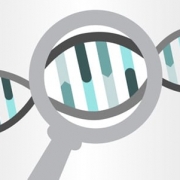Trial underway for hATTR therapy
The novel ‘one off’ treatment could change the lives of those living with the condition
A new gene therapy that could help those living with a rare condition called hereditary transthyretin amyloidosis has now entered phase 1 clinical trials. The treatment uses CRISPR/CAS9 genome editing to reduce the amount of amyloid protein being produced by the liver cells in affected patients.
A life-threatening condition
Hereditary transthyretin amyloidosis (hATTR) is a rare genetic disease caused by a change in a single gene. The gene, TTR, codes for a protein called transthyretin, which is made by liver cells to help transport thyroid hormones and vitamin A around the body.
When certain changes are present in the DNA sequence of the TTR gene, the resulting protein folds differently, taking on a shape that stops it from functioning correctly and being broken down by the body. Over time, this protein (one of a group called amyloids) can build up in the cells and tissues, causing damage to organs and other structures.
The condition usually presents in adulthood as it takes time for the amyloid proteins to accumulate enough to cause symptoms. From this point the condition is progressive, often causing damage to the nerves, heart and kidneys, and treatment options are limited.
Existing treatments
In 2018, this blog reported on another treatment for hATTR called patisiran: a revolutionary RNA interference medication.
RNA interference treatments such as patisiran do not change the DNA of the variant gene. Instead, they intercept the messenger RNA (mRNA) that transfers the ‘recipe’ for the protein from the DNA to the ribosome, where the protein is constructed. This can prevent the harmful protein from being made and can therefore significantly reduce or pause disease progression.
The problem with these types of treatments is that they do not solve the root cause of the problem: the variant gene will continue being copied into mRNAs, and so the treatment needs to be repeated every few weeks to reduce TTR protein levels.
A one-off solution
The new therapy aims to provide a more permanent way to treat hATTR by ‘knocking out’ the TTR gene and preventing liver cells from being able to produce the TTR protein. The treatment only needs to be administered once, giving patients greater freedom when compared with existing options.
Six people in the UK and New Zealand have received the treatment so far, which consists of a single intravenous infusion of genome editing molecules packed in lipid nanoparticles.
Results published in The New England Journal of Medicine show that 28 days after treatment, none of the patients had experienced serious side effects, and the three patients who received the highest dose all had reduced levels of TTR protein in their blood. The average reduction of the protein was 87%, with a high of 96% in one patient.
“The data are extremely encouraging,” said University College London Professor Julian Gillmore, who is leading the trial. “Until very recently, the majority of treatments we have been able to offer patients with this condition have had limited success.”
He added: “If this trial continues to go well, it will mean we can offer real hope and the prospect of meaningful clinical improvement to patients who suffer from this condition.”
–









